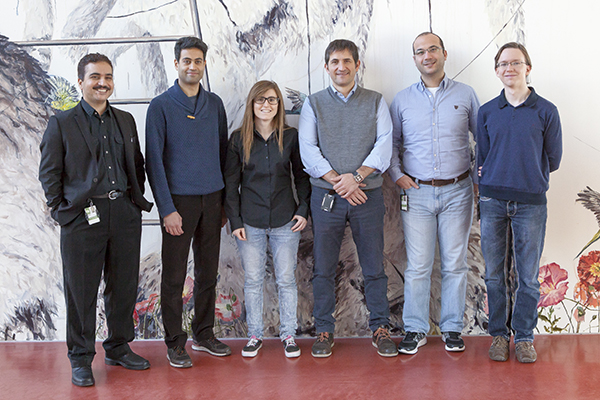On March 22 the annual financial report for BigData@BTH was sent to the Knowledge Foundation. It shows that the profile has developed well in this initial, start-up phase. In 2015, seven new employees were tied to the profile and the year also resulted in several high-quality publications, one patent application and hosting the 3rd Swedish workshop on Data Science (SweDS).
It has been a busy year in every respect. In terms of staffing, the ambitious recruitment efforts resulted in 3 PhD students, 2 post docs and 2 assistant professors. The staff hasn’t been idle, 2 ISI publications and 6 conference contributions within the profile and 7 ISI-publications as well as 11 conference contributions within the research environment. Two events also took place during autumn, the first was an internal project workshop, bringing all the people involved in the project together for an update and information dissemination among partners. During 2015 10 companies were involved in the profile contributing with approximately 6,3 MSEK in co-financing. The second event was the 3rd Swedish workshop on Data Science (SweDS), a national workshop bringing together academics and practitioners in the area. This year the event was hosted by BTH. More than 50 people from 10 different universities and companies attended the workshop.
Research results range from using algorithms to detect fraud to assess quality of images
Despite the fact that the profile is still in its start-up phase, several scientific results have been generated. Their applications range over a large variety of areas including algorithms detecting fraud in the retail business, especially focusing on so called “return-fraud”, where a seller registers a false return of a product.
Several findings have been made in relation to image processing in cooperation with Arkiv Digital and Sony mobile communications. These range from quality assessment (blur detection) to improvements in JPEG-encoding of images, such as the first JPEG encoder completely implemented on a GPU. A JPEG encoding algorithm was developed, that can either improve quality in selected areas of an image or reduce the file size without degrading quality in high-detailed areas. Finally, a method to improve the so-called “debayer step” in a camera pipeline was developed which resulted in a patent application submitted in January 2016.
Together with Ericsson algorithms for automated live migration of virtual machines were studied and together with Compuverde a cache sub-system in their fault-tolerant storage system for big data was developed and studied.
New research and potential innovation was produced together with Noda Intelligent Systems in two use cases: 1) Automatic detection of manual program changes in district heating network substations, and 2) forecasting of heat load and future demand in district heating networks.
Methods and strategies for managing acute surgical flows have been developed, based on a simulation model. Finally, an optimization model for sequence dependent parallel operating room schedules where you can evaluate the effects of e.g., additional surgical teams, operation rooms, schedules etc.


Leave A Comment